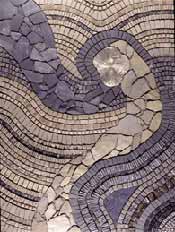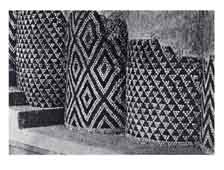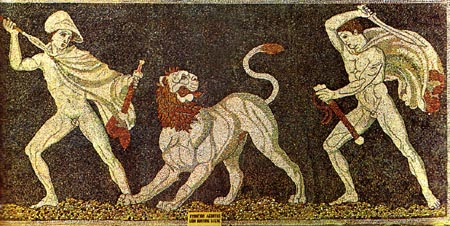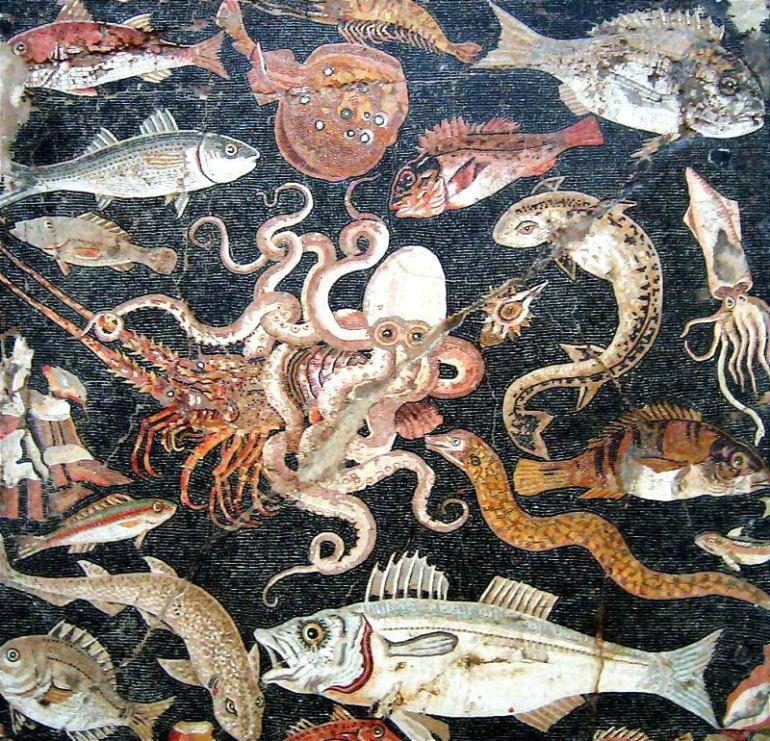

|

|
Mosaics are designs or pictures created by embedding small pieces of glass, stone, terracotta etc. into a bed of cement or other form of fixative. This form of decoration is often used for panels or on floors, but is especially effective on curved surfaces, such as ceilings and vaults. Mosaics are found both indoors and outdoors. The art of mosaic, in one form or another, has been practised for thousands of years, but mosaic as we know it was invented by the Greeks, who then passed their skills on to the Romans. Many ancient mosaics have survived the ravages of time remarkably well. The Romans in due course became the Byzantines, who are renowned for their superb wall and vault mosaics. Byzantium fell in the 15th century AD, and mosaic went into a decline until the great revival in the 19th century, a revival which has continued to this day. Modern developments in materials and techniques are evidence that
mosaic is very much alive in the 21st century. Computers are of
course ideal for designing contemporary mosaics, and are increasingly
used for that purpose. Early mosaics can be traced back as far as four to three thousand years BC. These basic mosaics, mainly found in Mesopotamia, consisted of thin cones of clay, baked and then painted. The slim cones were then pushed into mud walls to offer some protection and decoration. There is a large section of wall preserved in the Staatliche Museum in Berlin, Germany.
"Cone mosaic" pillars from Uruk, Mesopotamia The Greeks made good use of water-worn pebbles to make floor mosaics. These pebble mosaics could be found all around the Greek world from the 6th to 4th century BC. Many of these mosaics were in a polychrome finish and often depicted light figures against a dark background. Good examples of this type of mosaic have been found in Athens, Corinth and Tarsus.
The Lion Hunt, pebble mosaic, Pella, Greece - 4th ct BC By the end of the 3rd century BC mosaics with pebbles were being replaced by those with tesserae made from stone and glass. Because of tesserae's smaller size, more could be packed into a given area. And as with printed pictures, the more dots, the more detail. This led to designs of ever greater detail and complexity. It was the Romans, who learnt the art of mosaics from the Greeks, who were responsible for the spread of mosaics throughout their huge empire. Some of the earliest 2nd and 1st century AD mosaics have been found preserved at Pompeii. Even the pavements were decorated with stone and marble patterns. Considering the violent nature of Pompeii's end it is remarkable that such treasures have survived!
|
Pompeii Fish Mosaic
Truly sophisticated mosaics (too sophisticated? Discuss) had arrived, and the way was open for the Byzantines and their successors, up and to and including Sonia King (see above)...
All
content is copyright of © Mosaic Matters and its contributors.
All rights reserved
Mosaic
Matters is:
Editor: Paul Bentley
Web Manager/Designer: Andy Mitchell




